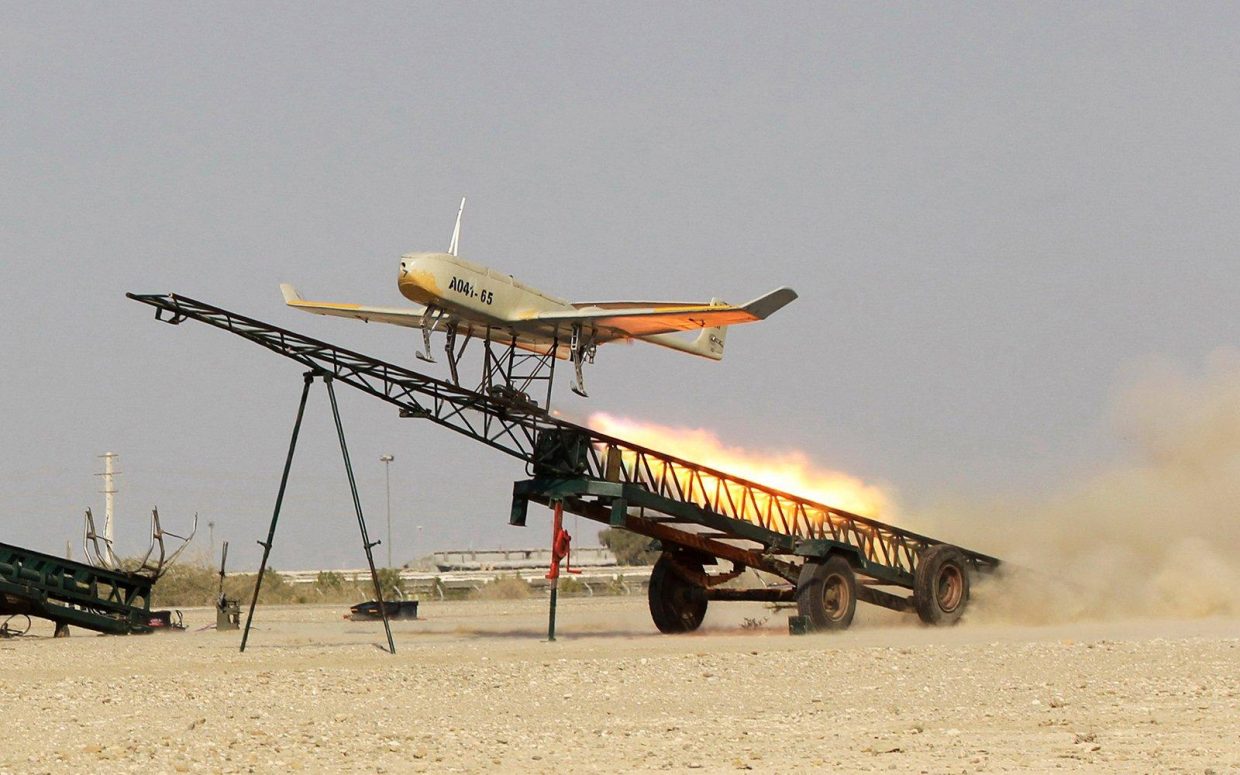In recent years, the landscape of conflict in the Middle East has undergone a pivotal transformation, driven largely by rapid advancements in drone warfare technology. Unmanned aerial vehicles (UAVs), once primarily tools for surveillance, have evolved into sophisticated instruments of precision strike capability, reshaping military strategies and altering the balance of power across the region. This article examines how these technological developments are not only changing the dynamics of ongoing conflicts but also raising complex strategic, ethical, and geopolitical questions for local actors and international stakeholders alike.
Table of Contents
- Advancements in Drone Technology Redefine Battlefield Dynamics in the Middle East
- Strategic Implications of Unmanned Systems on Regional Security and Power Balance
- Tactical Innovations in Drone Deployment Enhance Precision and Operational Efficiency
- Policy Recommendations for Regulating Drone Warfare to Mitigate Escalation Risks
- Future Outlook
Advancements in Drone Technology Redefine Battlefield Dynamics in the Middle East
Unmanned Aerial Vehicles (UAVs) have become pivotal assets in the evolving Middle Eastern theaters of conflict, reshaping traditional combat strategies and operational priorities. Recent technological breakthroughs have enhanced drone capabilities, including extended flight endurance, improved stealth features, and sophisticated AI-powered target recognition systems. These advancements enable more precise, real-time intelligence gathering and autonomous strike execution, reducing the need for direct human involvement in high-risk scenarios. Consequently, armed forces are increasingly integrating drones into coordinated multi-domain operations, vastly improving battlefield awareness and tactical decision-making speed.
Key innovations driving this transformation include:
- Swarm drone technology for overwhelming enemy defenses through collective maneuvers.
- Advanced electronic warfare countermeasures to neutralize adversary surveillance and communication networks.
- Miniaturized payloads capable of delivering precision strikes without extensive collateral damage.
- Hybrid power systems extending operational range in remote or harsh environments.
These developments are not only shifting the balance of power but also challenging the existing rules of engagement, compelling military planners to rethink conventional force deployments and defense protocols across the region.
Strategic Implications of Unmanned Systems on Regional Security and Power Balance
The integration of unmanned systems into military operations is reshaping the strategic calculations of regional actors, significantly altering the dynamics of power projection. Drones offer unprecedented surveillance capabilities, allowing states to gather real-time intelligence deep within adversarial territories without risking personnel. This enhanced situational awareness is coupled with precision strike capabilities, empowering smaller states and non-state actors to challenge traditional military hierarchies. As a result, the balance of power is increasingly influenced by technological agility rather than sheer force size, prompting regional powers to recalibrate their defense postures and alliance strategies.
Moreover, the proliferation of unmanned technologies has introduced a layer of complexity to regional security frameworks by shifting deterrence paradigms. Key strategic implications include:
- Lowered entry barriers for conflict initiation: The reduced risk to human life lowers the threshold for engagement, potentially increasing the frequency of localized skirmishes.
- Asymmetric advantages: Non-traditional actors exploit drones for asymmetric tactics, disrupting established military doctrines and complicating countermeasures.
- Arms race acceleration: Regional powers are accelerating investments in drone technology and counter-UAS systems to maintain strategic parity.
These developments signal a transformative shift, wherein control over airspace and technological dominance are becoming central determinants of geopolitical influence in the Middle East.
Tactical Innovations in Drone Deployment Enhance Precision and Operational Efficiency
Recent breakthroughs in drone technology have revolutionized battlefield tactics, enabling forces to execute highly precise strikes while minimizing collateral damage. Enhanced AI algorithms, combined with real-time data integration, allow drones to autonomously identify, track, and engage targets with unprecedented accuracy. This shift toward smart deployment transforms drone swarms into cohesive units that adapt dynamically to evolving combat scenarios, effectively creating a new paradigm in aerial reconnaissance and assault operations.
Key innovations shaping this tactical evolution include:
- Multi-layered sensor fusion: Integrating visual, infrared, and electronic intelligence to enhance target recognition under varied environmental conditions.
- Collaborative swarm intelligence: Coordinated drone networks that communicate and distribute tasks autonomously, reducing operator workload and response times.
- Precision-guided payload delivery: Development of miniature munitions that ensure strikes are both effective and surgically targeted.
- Cyber-resilience: Robust encryption and anti-jamming systems to safeguard drones against electronic warfare disruptions.
These advancements significantly boost both the precision and operational efficiency of missions, marking a strategic leap forward in how modern conflicts are waged in the Middle East. Such capabilities provide commanding officers with flexible, rapid-response options that can decisively influence the tactical landscape on the ground.
Policy Recommendations for Regulating Drone Warfare to Mitigate Escalation Risks
To effectively minimize the risks of escalating conflicts through drone warfare, it is imperative that nations adopt a comprehensive regulatory framework emphasizing transparency and accountability. Governments should prioritize the implementation of strict operational protocols that define clear engagement criteria and ensure rigorous oversight of autonomous systems. International collaboration can foster the establishment of common standards, including mandatory reporting mechanisms and real-time monitoring to avoid inadvertent escalations triggered by misinterpretations or uncoordinated strikes.
Additionally, policymakers must integrate ethical considerations into drone deployment strategies by mandating advanced risk assessment tools designed to evaluate potential collateral damage and civilian impact before missions are authorized. This includes the promotion of robust communication channels between affected states to defuse tensions swiftly. Establishing dedicated diplomatic hotlines and joint crisis management teams will further support conflict de-escalation, ensuring that technological advancements in drone warfare do not outpace diplomatic safeguards.
- Standardize identification protocols to prevent friendly fire
- Enforce limits on autonomous strike capabilities
- Develop international treaties reflecting emerging drone technologies
- Support transparency initiatives with multi-lateral verification
Future Outlook
As drone technology continues to evolve, its impact on Middle East conflicts is set to deepen, reshaping military strategies and geopolitical dynamics across the region. While these advancements offer enhanced precision and operational capabilities, they also pose significant challenges related to security, ethics, and regional stability. Moving forward, policymakers and military leaders will need to carefully navigate these complexities to address the evolving nature of warfare in the Middle East.













